False ABS brake operation: What causes it
False ABS brake operation — Causes and fixes
Anti-lock brakes (ABS) are designed to prevent skidding on slick and dry pavement due to a wheel locking up and skidding. A wheel creates the most friction when brakes slow the wheel rotation speed. So ABS brakes monitors the rotation speed of all the wheels and determines if one wheel is about to lock up.False ABS brake operation occurs when a wheel speed sensor signal is wrong, caused by an improper air gap, a broken tone ring, debris on the sensor that interferes with the wheel speed reading, or missing sections of a multipole sensor.
How an ABS system senses wheel rotation speed
An ABS system includes wheel speed sensors, notched “tone” rings, a high pressure pump, a valve body, and an electronic ABS module.
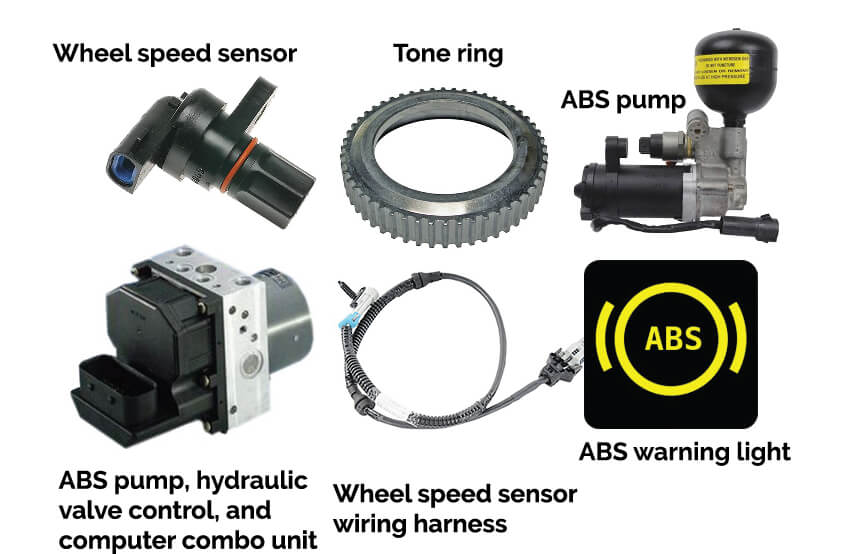
Wheel speed sensors
The wheel speed sensor detects the teeth on the rotating tone ring. The gap between the sensor and the tone ring is critical, as is the cleanliness of the tone ring itself. Rust buildup on the tone ring, a crack in the ring or a chipped tooth can cause false ABS activation; ABS activation when it isn’t actually needed. In addition, since some sensors incorporate a magnet, any ferrous particle buildup on the face of the sensor can interfere with proper sensor operation.
In late model vehicles, car makers have moved away from notched steel tone rings and started using a rubber ring with embedded magnetic material (encoder ring), each section alternating between North and South poles. A Hall effect sensor detects the alternating North/South poles and generates a digital on/off signal to the ABS module.
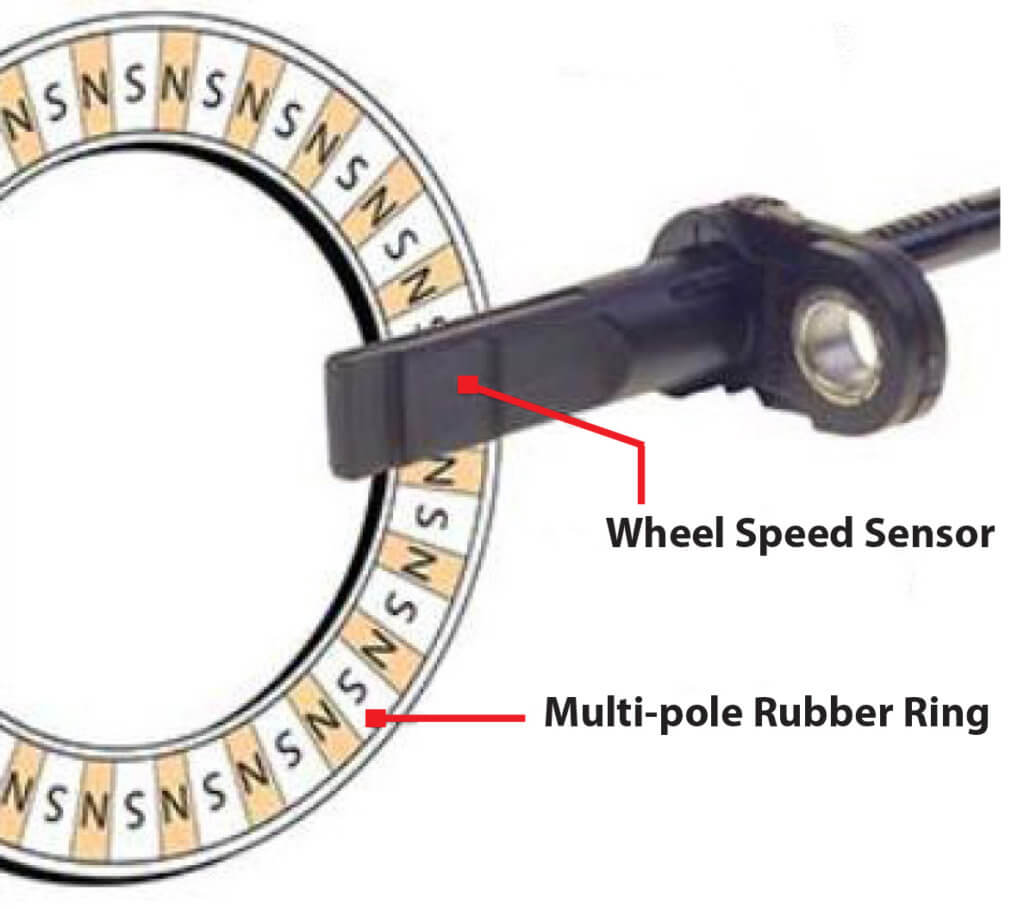
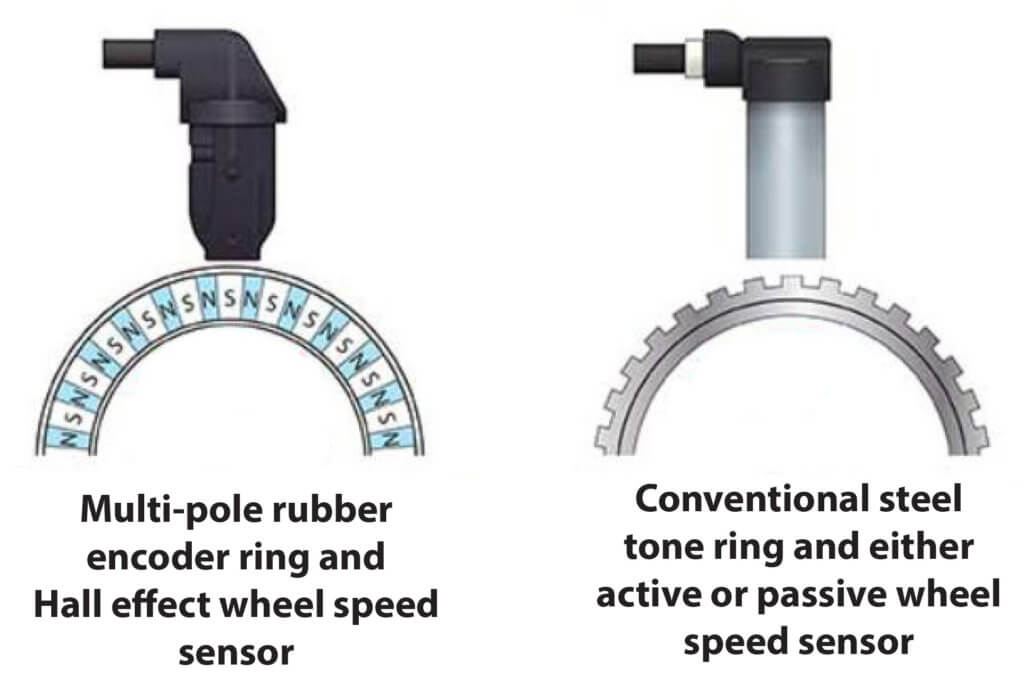
Both tone ring and encoder ring styles can create false ABS activation if metallic debris accumulates on either the magnetic encoder ring or the face of the magnetic ABS sensor. Rust buildup on the tone ring or a missing tooth or crack in the tone ring can also create false ABS operation.
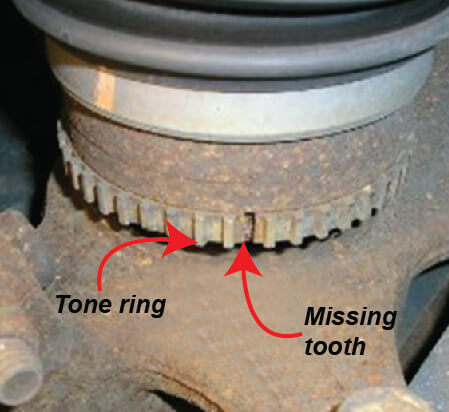
Missing tooth on tone ring
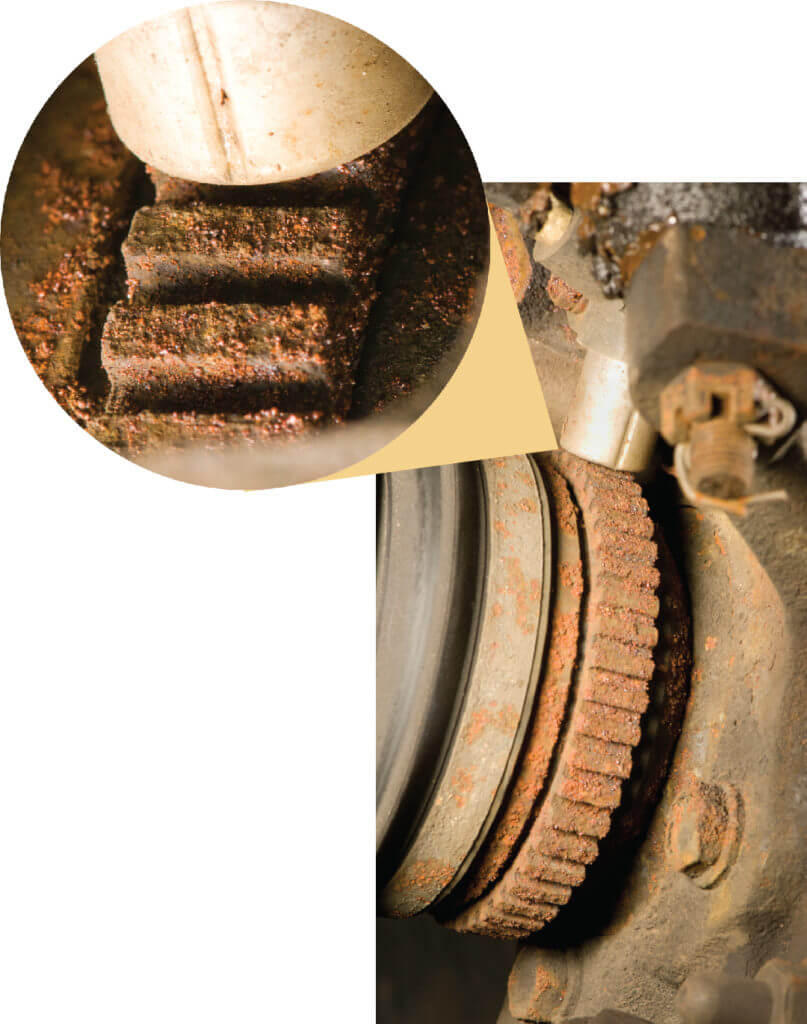
Rust accumulation causes false ABS activation
Fix ABS false activation
If the ABS light is on, get the trouble codes read to find out which wheel is having the problem.
If the ABS light isn’t on steady, you might not have stored trouble codes.
In that case, assume you have debris build on either the sensor face or the encoder ring.
Clean an ABS tone ring system
Use a wire brush to remove rust buildup from the tone ring. Blow the rusty debris. Then rotate the wheel and check for missing teeth or a cracked tone ring. If you have missing teeth or a crack, you must replace the part.
Next, wipe the face of the wheel speed sensor to remove any metallic debris.
Clean an encoder ring system
Use a soft rag and gently wipe the rubber ring to remove any metallic debris that may have accumulated on the encoder ring.
©, 2021 Rick Muscoplat
Posted on by Rick Muscoplat